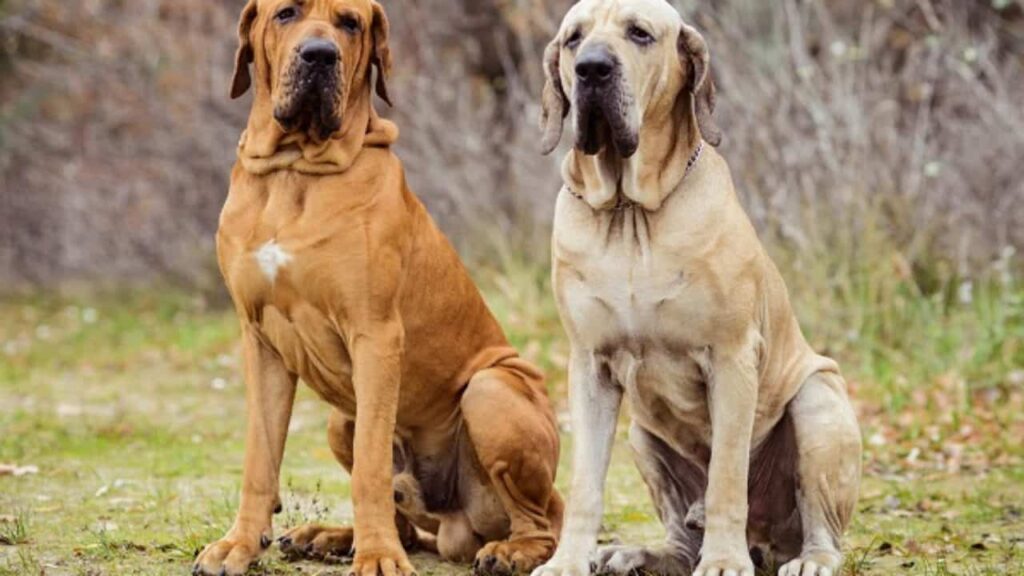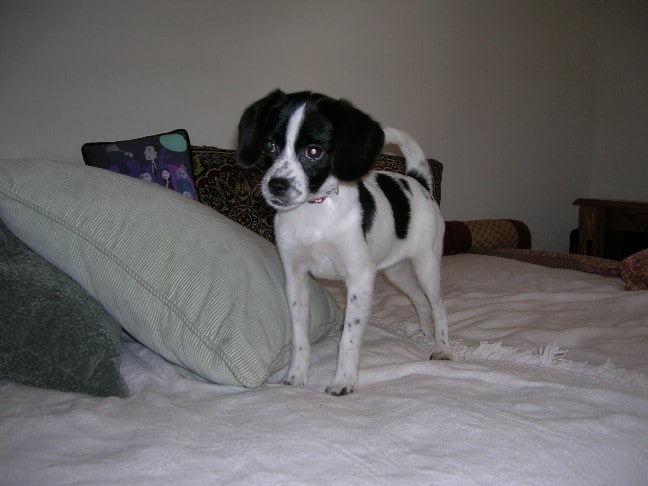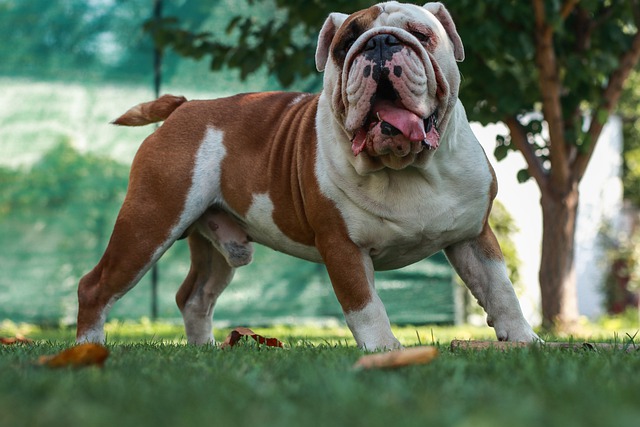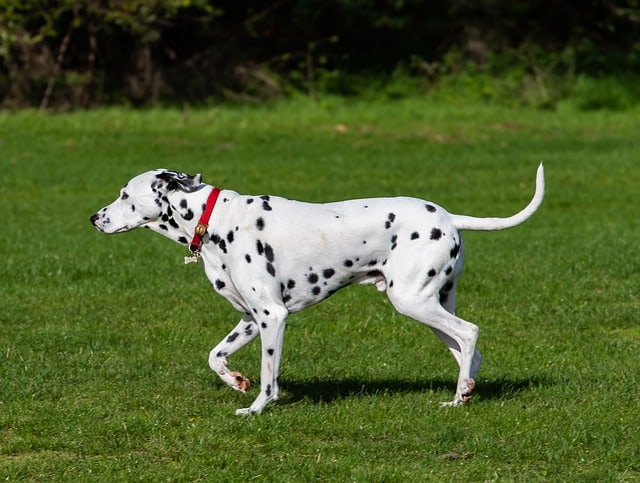One of the best ways of determining whether your dog is small, medium, or large is by checking his weight.
So, how big is a 25-pound dog or a 50-pound dog?
Well, it’s hard to know unless you use other size indicators to give you a more precise picture.
Simply knowing your dog’s weight may not give you enough clues.
Moreover, each dog breed has his/her own attributes such as unique chest sizes or shoulder heights.
In this post, we will let you know if your adult dog can be considered big, medium or small—whether he’s a 25-pound dog or a 60-pound dog.
Dog Size Categories

Dog sizes often fall into small, medium, or big categories based on their weight.
It is also common for each category to be divided further into subcategories like toy/teacup dogs or extra large/giant breeds.
Generally, there is no specific agreement on the classification of dogs in terms of size.
Different canine experts give different cutoff weight points for their weight categories.
So, depending on the source that you’ve consulted, you can find variations in the weight ranges.
The good news is that though you might see minor differences between weight ranges, they will always be within a few pounds of the general weights.
For illustration purposes and to help you quickly figure out the size category that your dog belongs to, we will use the following general guide:
| Size Category | Weight | Examples |
| Toy Dogs (or Extra Small) | 3 -15 pounds | Chinese Crested, Brussels Griffon, Biewer Terrier, Maltese, Chihuahua, English Toy Spaniel, Shih Tzu, etc |
| Small | 12 -25 pounds | American Cocker Spaniel, Yorkshire, Boston Terrier, Airedale Terrier, Cavalier King Charles Spaniel, etc |
| Medium | 25 -50 pounds | Border Colie, Dalmatian, Finnish Spitz, German Pinscher, Bassets Hounds, Griffons Vendeens, Shetland Sheepdogs, Whippets, etc |
| Large | 50 -100 pounds | German Shepherd, Rottweiler, Labrador Retriever, Alaskan Malamute, Boxer, Golden Retriever, etc |
| Giant (or Extra Large) | More than 100 pounds | Great Danes, Mastiffs, Newfoundlands, Irish Wolfhound, St Bernard, etc |
Features That Can Help You Figure Out Whether Your Dog Is Big or Small

It is a dog’s distinguishing physical features that can give you a tangible feel of how big or small he/she is.
These features usually correlate with the dog’s weight and are excellent determinants of a dog’s size category.
That is, the bigger these features are, the bigger the dogs tend to be—and vice versa.
However, this is not always the case. For example, the bulldog which is a medium-sized dog has a short shoulder height but a wide barrel chest.
I. Back Length
This covers the distance from the base of the dog’s collar to the base of its tail.
Wolfhounds boast the longest backs with one named Ferrel holding the record at 7 feet 9 inches (2.4 m).
Wolfhounds also happen to hold the record for the longest tail at 30.2 inches!.
The dog’s back length can help you know the right bed size to get for your dog.
II. Shoulder Height
This is how tall your dog stands when he is upright on all fours.
The world’s dog record for tallest height is held by Zeus, an American Great Dane, who stood at 3 feet, and 5.18 inches.
Contrast that with Boo Boo, a Chihuahua who stands at only 14 inches and weighs 680 grams.
Your dog’s height can be used in a dog BMI Calculator to compare his height with his weight.
This can show you whether your dog is obese or if he has the ideal weight for his height.
III. Chest Girth
This is essentially the size of your dog’s chest.
It’s a measure of the widest part of your dog’s chest, which lies behind his front legs.
Your dog’s chest girth helps you know the right harness size.
Breeds noted for big chest girths include the Dachshund.
IV. Neck Girth
This is the thickness or circumference of a dog’s neck.
You can find this by simply wrapping a measuring tape around your pup’s neck.
Neck girth is useful for finding the right collar or bandana size so that your dog is not too restricted.
Rottweilers have some of the widest necks.
V. Paw Size
Paw size is one of a dog’s most defining features and is usually correlated with its weight but not always.
For example, the Great Dane (110–180 lbs) and St. Bernards (140 to 180 lbs), which are categorized as giant dogs, have rather big paws which are needed to support their massive weights.
Paw sizes come in handy when you want to determine the right boot size for your dog.
VI. Breed and Sex
Generally, female dogs have smaller physical features than male dogs, which explains why they are smaller in overall size than males.
Different dog breeds also show distinctive sizes and varieties, from pugs and French bulldogs to greyhounds or wolfhounds.
The Impact of Dog Size
So, why should you care about your dog’s size?
What do you stand to gain or lose by knowing whether your dog is big or small?
Well, the size of your dog can determine the kind of planning that you have to make regarding your pet. For example:
- What’s the right collar size that will maximize your dog’s comfort?
- What’s the best shoe size or the right-fitting harness for your dog?
- What exercise and diet requirements are recommended for your dog?
- When you travel by road or by air with your dog, how do you know the right cage size for your dog to ensure that he is comfortable and happy?
It all boils down to knowing your Fido’s size.
Also, you want a smaller dog for smaller living spaces like residential apartments that lack a backyard or have shared spaces like hallways or elevators.
Let’s now help you figure out how big or small your dog is…
How Big Is A 25 Lb Dog?

Based on the size category table above, 25 pounds puts your dog in the category of a small dog.
Popular breeds in this category include the Boston Terrier, Shetland Sheepdog, Beagle, and Cavalier King Charles Spaniel, etc.
This category boasts a small neck girth or circumference of 8-18 inches and stands at 15-22 inches.
Small dogs stand out for their relatively long life spans and appeal for their affordability and ease of transportability.
They are also easy to cuddle, which can make them a favorite of children.
How Big Is A 40 Lb Dog?

At 40 pounds, a dog would fall in the low side of the medium-sized group.
For this, you would be thinking of a Whippet, the English Cocker Spaniel, the German Pinscher, Pembroke Welsh Corgi, or the Boykin Spaniel.
Their size makes them relatively easy to manage while their playfulness and protective nature make them ideal for families.
This category of dogs often proves to be hardier or sturdier than small dogs.
How Big Is A 50 Lb Dog?

50-pound dogs can also be grouped among mid-sized dogs while being on the larger side of the group.
They include examples like the Airedale Terrier, the Bull Terrier, Bearded Collie, and Bulldog.
They stand 18-23 inches in height with the bulldog being shorter at 14-15 inches.
The size of these dogs makes them excellent candidates for apartment living considering that they are neither too big nor too small.
How Big Is A 60-Pound Dog?

60-pound dogs are considered to be large dogs.
Common examples include Siberian husky, Dalmatian, American Staffordshire, Greyhound, and Giant Schnauzer, etc
In height, they lie in the 19-28-inch range.
They have a neck girth of between 18 to 26 inches.
Despite their intimidating size, large dogs are great with children due to their gentleness.
They are also more laid back than small breeds, which further makes them good family dogs.
Large dogs are also quite intelligent and show excellent learning skills.
Closing Thoughts
In the canine world, size matters but for a more rounded picture, you need to look at what lies behind the weight.
This can make you much more acquainted with the nuances of your dog.
It means not getting the odd scene where your dog is stifling on an overly tight leash.
With this more intimate knowledge of your dog, planning for your dog’s typical day becomes a breeze.
As an Amazon Associate, we may receive a small commission from qualifying purchases but at no extra cost to you. Learn more. Amazon and the Amazon logo are trademarks of Amazon.com, Inc, or its affiliates.

